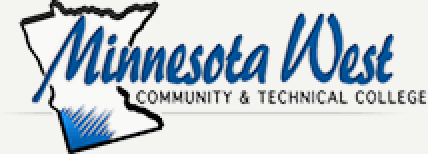MATH 2201 Calculus III
MATH 2201: Calculus III
Description
Calculus III extends applications of derivatives and integrals to three-dimensions, this course continues Calculus II. Topics include vectors, vector-valued functions with applications, functions of two or more variables, partial derivatives, multiple integrals, and vector analysis topics including line and surface integrals, Green’s Theorem, the Divergence Theorem, and Stoke’s Theorem.
Credits
4
Prerequisite
MATH 1122
Corequisite
None
Topics to be Covered
1. Three Dimensional Coordinate systems and vector definitions
2. Vector Dot and Cross Products
3. Equations of lines, plane and surfaces (function approach).
4. Cylindrical and Spherical coordinates.
5. Vector Functions and space curves
6. Derivatives and Integrals of Vector Functions.
7. Arc Length, Curvature and Motion in Space.
8. Parametric Surfaces
9. Functions of several variables
10. Limits, Continuity, and Partial derivatives
11. Tangent Planes and Linear Approximations
12. Chain Rule for many variables
13. Directional Derivatives and the Gradient vector
14. Maxima, Minima, and Saddle Points
15. Lagrange Multipliers
16. Double Integrals over Rectangles and over General regions
17. Maxima, Minima, and Saddle Points
18. Lagrange Multipliers
19. Double Integrals over Rectangles and over General regions
20. Iterated integrals
21. Double Integrals in Polar Coordinates
22. Surface Area and other applications of double integrals
23. Triple Integrals and their applications
24. Changing Variables in Multiple Integrals
25. Vector Fields and Line Integrals
26. Green’s Theorem
27. Curl and Divergence and Surface Integrals
28. Stoke’s Theorem
29. Divergence Theorem
Learning Outcomes
1. Explain the concepts of limits and continuity for real-valued functions of two or more variables.
2. Find derivatives of vector-valued functions and use those derivatives to describe an object’s motion.
3. Use partial derivatives and/or Lagrange multipliers to locate any extreme values and saddle points of a function of several variables.
4. Evaluate iterated integrals using rectangular, cylindrical, and spherical coordinate systems.
5. Use triple integrals to solve problems such as calculating volume, center of mass, moments of inertia, and the expected value of a continuous random variable.
6. Recognize vector fields. Compute and interpret curl, divergence, and flux.
7. Use line integrals to calculate work done by a force field in moving an object along a curve.
8. State and apply the Fundamental Theorem of Line Integrals, Green’s Theorem, Stokes’ Theorem, and the Divergence Theorem.
9. Compare and contrast the generalizations of the Fundamental Theorem of Calculus listed above.
10. Compute gradients and directional derivatives and apply them to finding tangent spaces and normal lines.
Credit Details
Lecture: 4
Lab: 0
OJT: 0
MnTC Goal Area(s): Goal Area 04- Mathematics/Logical Reasoning
Minnesota Transfer Curriculum Goal Area(s) and Competencies
Goal Area 04: Mathematics/Logical Reasoning is already met by the pre-requisite course MATH 1121
Transfer Pathway Competencies
1. Explain the concepts of limites and continuity for real-valued functions of two or more variables.
2. Find derivatives of vector-valued functions and use those derivatives to describ e an object’s motion.
3. Use partial derivatives and/or Lagrange multipliers to locate any extreme values and saddle points of a function of several variables.
4. Evaluate iterated integrals using recangular, cylindrical, and spherical coordinate systems.
5. Use triple integrals to solve problems such as calculating volume, center of mass, moments of inertia, and the expected value of a continuous random variable.
6. Recognize vector fields. Compute and interpret curl, divergence, and flux.
7. Use line integrals to calculate work done by a force field in moving an object along a curve.
8. State and apply the Fundamental Theorem of Line Integrals, Green’s Theorem, Stoke’s Teorem, and the Divergence Theorem.
9. Compare and contrast the generalizations of the Fundamental Theorem of Calculus listed above.
10. Compute gradients and directional derivatives and apply them to finding tangent spaces and normal lines.
